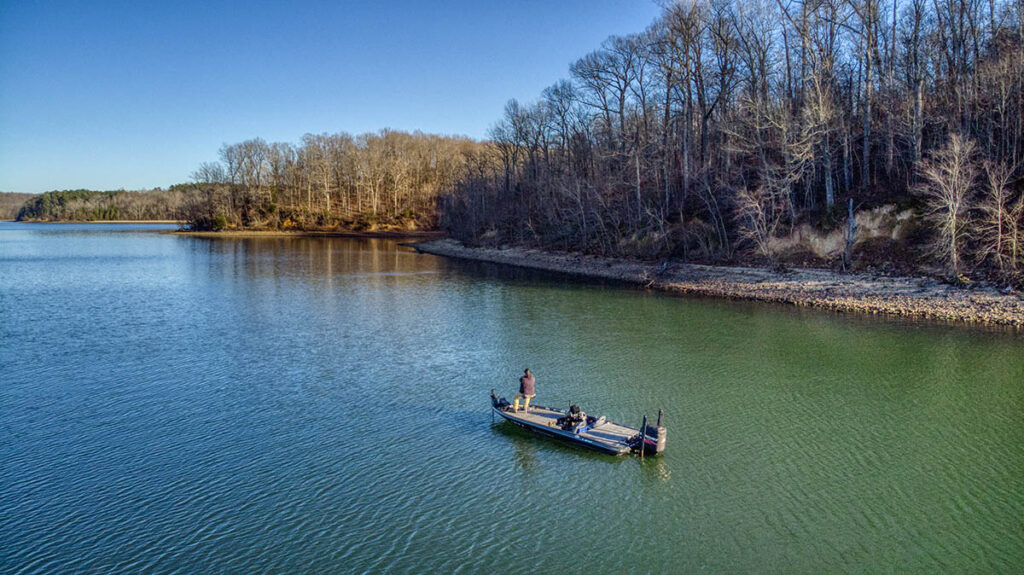
Kentucky Lake holds some of the best fishing in the country and has been given the moniker of the South’s Great Lake for it’s massive size. It’s the largest reservoir east of the Mississippi and one of the largest in the country stretching some 180 miles from dam to dam. It offers more than 2,000 miles of shoreline to fish as well as 160,000 acres of water to explore. It houses at least 15 gamefish species. But it offers much more than just a wide variety and a lot of water.
It’s the largest of the TVA bodies of water and can subsequently hold the most water. This can create a widely fluctuating ecosystem. And it has the rare nature of the current flowing north before dumping into the Ohio and Mississippi rivers down from Paducah after passing through the last lock.
The lake offers a lot of natural cover but also has arguably the most manmade cover of any fishery in America as well because the anglers and Kentucky Department of Fish & Wildlife care deeply about the health of the fishery. So many individuals have place a large amount of cover in the lake to help sustain its many gamefish populations.
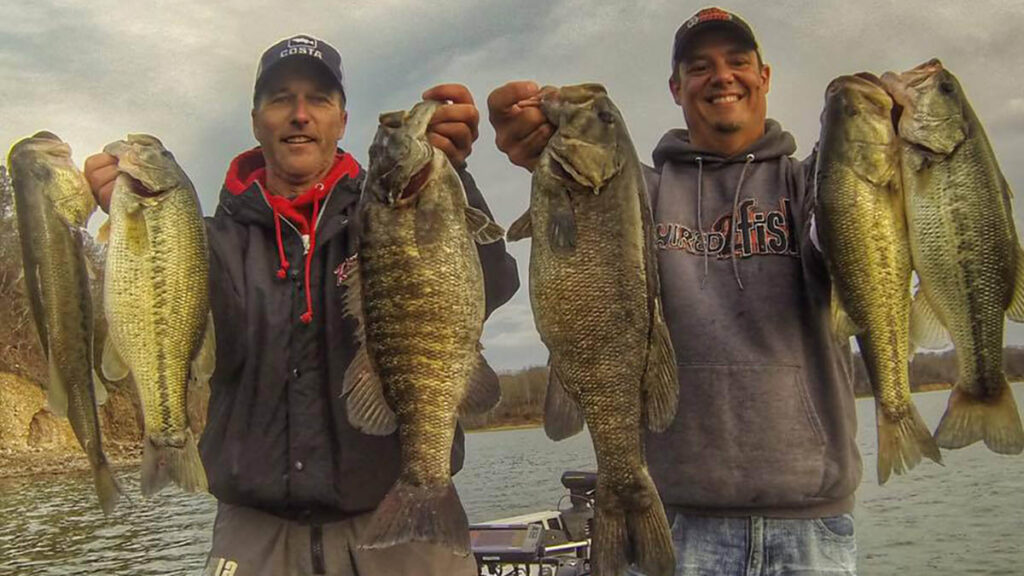
The Game Fish on Kentucky Lake
Maybe what separates Kentucky Lake from all other fisheries in the country is the wide array of quality game fish the lake offers. Not only can you catch a bunch of different game fish, but the fishery boats some tremendous quality for many game fish species which is makes it very unique. There are few places in the world where you can catch 7 pound largemouth and 6 pound smallmouth, but Kentucky Lake is one of them. There are very few places where you can catch 2 to 3-pound crappie and 1 pound bluegill and 2 pound read ear. But Kentucky Lake is one of them. There are very few places where you can catch big stripers, hybrids and white bass as well as big sauger, big channel cats, flatheads and blue cats. But Kentucky Lake has all of that.
So it’s not just that we have lots of game fish. But it has proven to support lots of good quality and good numbers of game fish to make this a “must visit fishing destination” for the whole country.
The two most sought after game fish on the lake would have to be black bass and crappie. The lake features healthy populations of largemouth and smallmouth bass as well as black and white crappie. The smallmouth fishery exploded in the last 3 years and is now world class according to many anglers who hail from historically great smallmouth fisheries. There is a good population of 3 to 6-pound smallmouth in the system. And many 6-pounders are getting caught every season now.
The largemouth population continues to cycle back with many positive years of strong spawns in the early 2020s. It takes roughly 4 to 5 years for bass to reach 15-inch keeper sizes and there is an increasing population of 2 to 4 pound bass with the occasional 5 to 7-pounder mixed in here and there. Within the next couple of years, Kentucky Lake will experience a boom in bass fishing unlike we’ve ever seen thanks to continued great spawns and habitat work throughout the lake.
The crappie populations are healthy for both black and white crappie. We would say the overall size average was down just a hair in 2024. There are a large number of smaller fish in the system. It takes roughly 3 years for crappie to reach a mature 10-inch keeper size. And the lake is full of 2-pound class crappie both white and black.
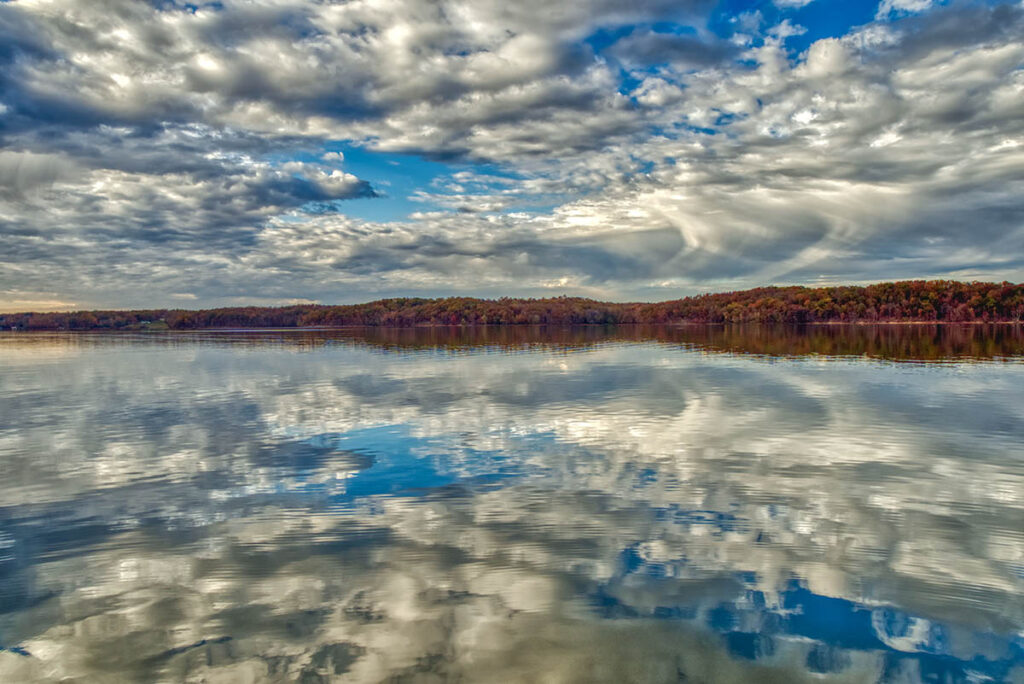
The Ecosystem
The lake has rebounded amazingly well from a string of bad spawns in the late 2010s. We had an influx of Asian carp into the system in 2010 and again in 2015. These to big influxes were blamed for the down turn in fishing on the lakes in the late 2010s and early 2020s. But that was more due to fluctuations in water levels during spawns, poor spawn numbers and recruitment in several years in the early 2010s that left large holes in year classes.
A couple of missing year classes can set you back many years for quality of fish in a population. So it takes several good years to offset the effects of just one bad year in spawns. That’s why the habitat work on the lake is so critical to ensure the fish populations survive the first year of spawn and recruitment (survival to the second year).
Fortunately during this down turn in species like largemouth and white bass, we saw an explosive growth in forage bases like threadfin and gizzard shad. And we saw tremendous growth in other fish populations like sauger, bluegill and smallmouth bass. Those species thrived while others had some down years.
The great think about Kentucky Lake’s ecosystem is it features a lot of hard bottoms as well as natural grass on the banks for spawning and recruitment. The offshore grass like hydrilla and milfoil has not returned since the floods in the early and middle 2010s that blocked grass from establishing a foothold in heavy, muddy current.
But there is a tremendous amount of healthy zooplankton, forage and small game fish in the system now for the bigger predator game fish to thrive. The explosion in the food base is boosting the growth of the game fish populations. And Kentucky Lake is already beginning to experience a boom period of fishing that should last us many years.
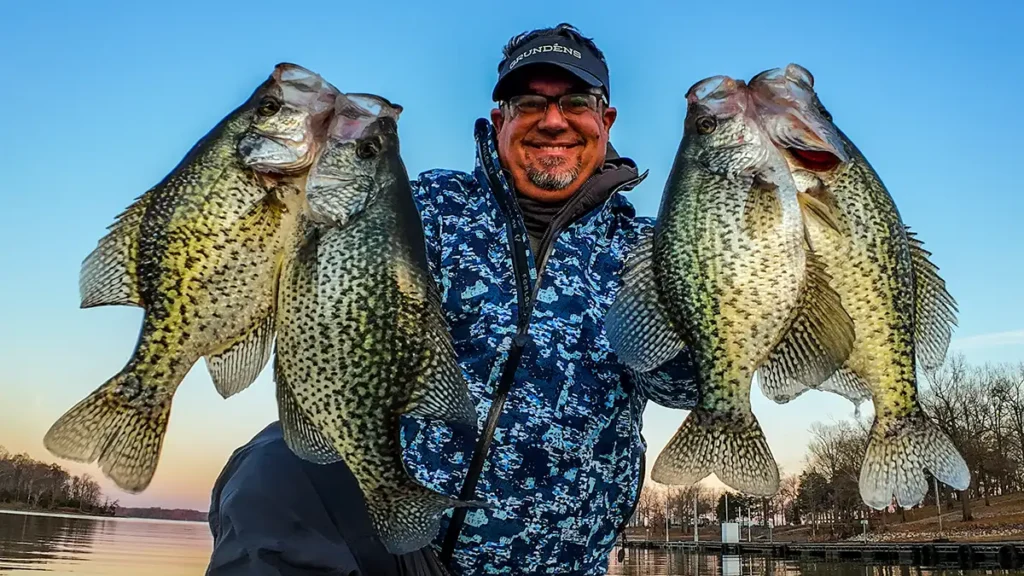
The Current Fishing Situation on the Lakes
With so many game fish species thriving on the lake, you can always find a good bite on the lake, including in the hottest days of summer and the coldest days of winter. Because of this, we developed our Kentucky Lake Fishing Calendar to help anglers follow the good bites from month to month. The Fishing Calendar has monthly follow-up articles to explain the good fishing each month and how best to find and catch multiple game fish during each month and season of the year.
Winter fishing has been excellent on the lakes for crappie, bass, bluegill and white bass. And there have been good sauger bites showing up when the levels and conditions get right. Spring fishing will again be excellent for crappie, bass and bluegill in that order. Crappie will rise in the water column to sun starting in February and March and go to spawn in March and April depending on water temps and length of days. Bass will follow behind coming shallow in March to feed before going to spawn in April. The smallmouth will come first followed by the largemouth. And after that the bluegills will come in and spawn including big red ear sunfish that are a prized catch on the lakes and often top 12 inches and 2 pounds this time of year.
Deep fishing is the name of the game in the winter but don’t forget to start looking shallow in February and March after those warmer rains heat up the banks.
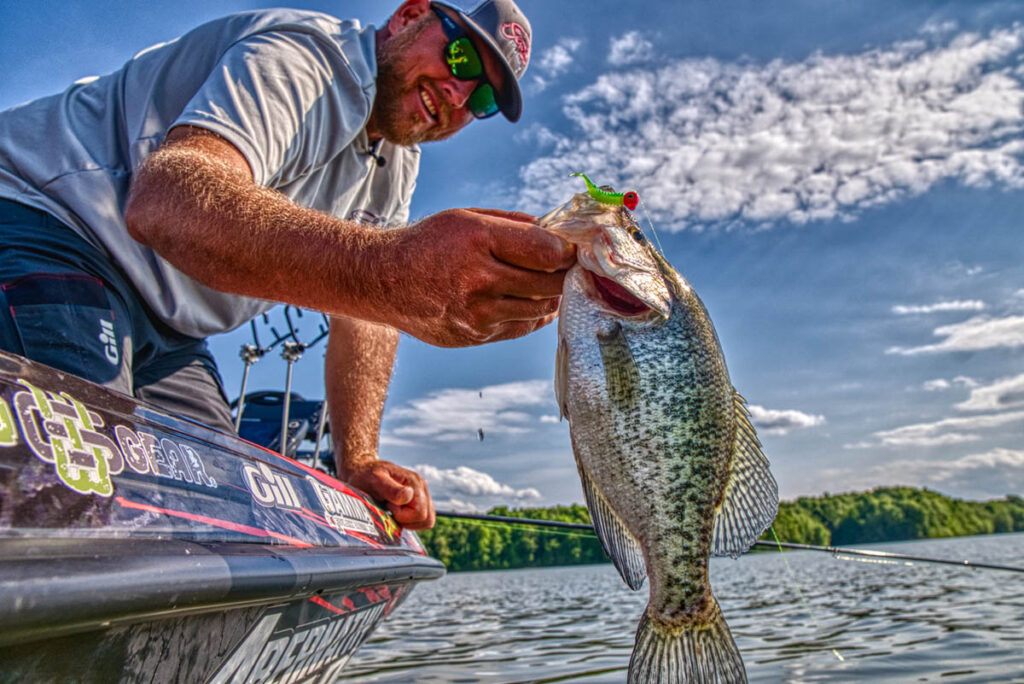
What About Lake Barkley?
When we talk about Kentucky Lake, we often also mean Lake Barkley. We are blessed to not only have one of the best lakes in the country in our little corner of the state, but we have to great lakes. Barkley is a bit smaller, shallower and usually offers a little more water color and cover to fish.
The fisheries are diverse and different in several ways but generally speaking you will find the same good fishing on Lake Barkley that you do on Kentucky Lake and often with a lot less of a crowd. Making it a hidden favorite of many of our best local anglers. Just know when a local talks about Kentucky Lake he’s also talking about Lake Barkley.
If power fishing in dirtier water is your forte, you will probably prefer Lake Barkley. And there are times when you can find a bite on Barkley Lake and a month later find that same bite happening on Kentucky Lake or vice versa. So it pays to bounce between the lakes to find good bites for lots of these different game fish.
